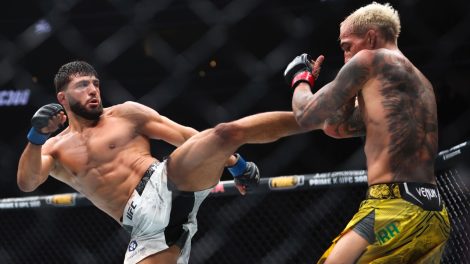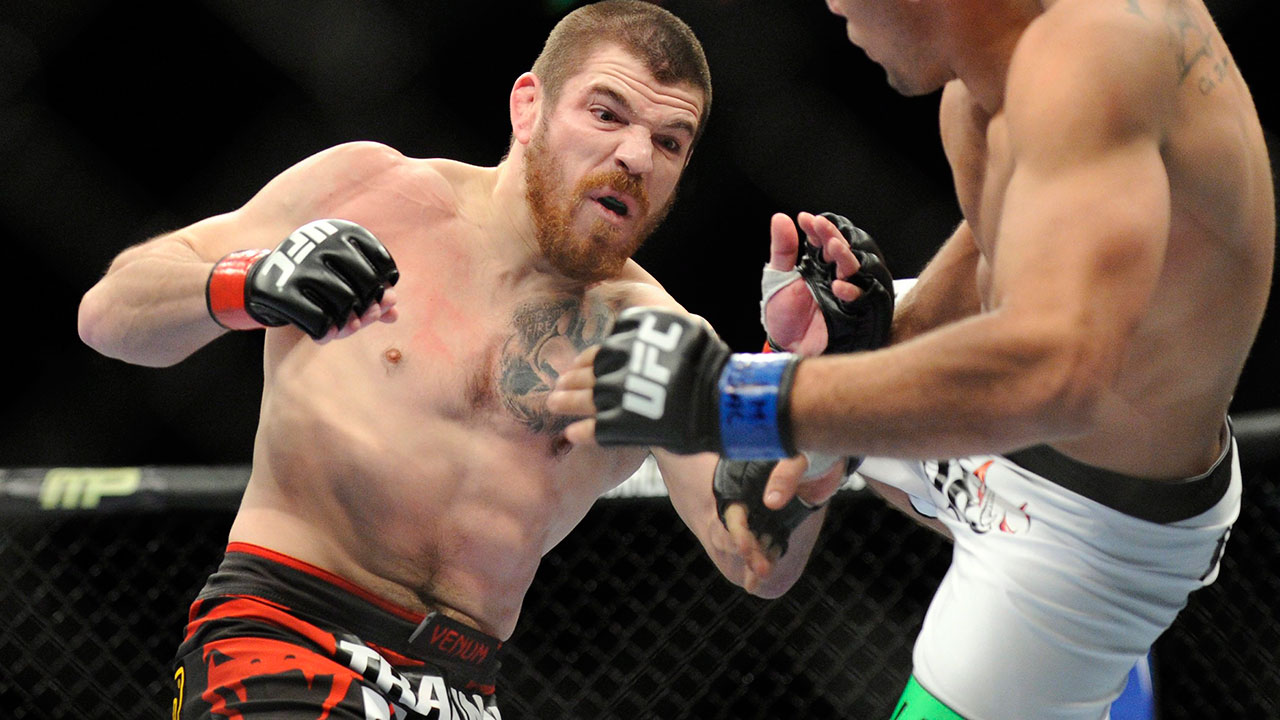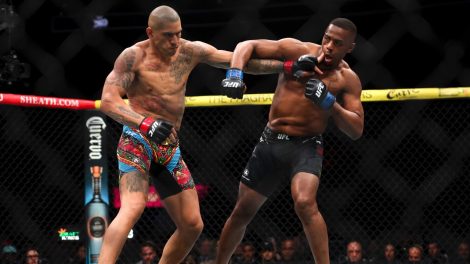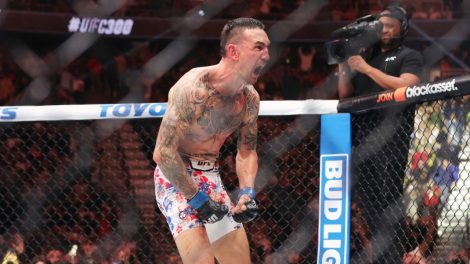TORONTO — While most of those in the stands undoubtedly recoiled when they saw Anderson’s Silva’s gruesome leg break Saturday night at UFC 168 in Las Vegas, Steven Sanders had a different thought cageside.
"The only question I had in my mind was how low down on the leg was the fracture," the UFC’s orthopedic surgeon recalled in a media conference call Monday. "Because the level of the fracture influences my thinking as to what type of orthopedic device I’m going to need to fix it.
"But the minute it occurred, I’m sitting there going ‘That’s fixable."’
Amazingly, less than 48 hours after surgery to insert a titanium rod and three screws in his left tibia, the 38-year-old Brazilian was up on crutches, accorded to the surgeon.
"It’s amazing because I don’t know if I would be able to do it that quickly," said Sanders.
And the surgeon said Silva’s question prior to the operation was when could he train again.
Still the former middleweight champion is spending most of his time in his hospital bed, at this stage, with his leg in a posterior splint.
"He’s behaving as anyone would who had just broke both their bones violently and then had a 11.5-millimetre-diameter rod stuck down the intramedullary canal of your tibia. It hurts quite a bit," Sanders said.
The fighter is expected to stay in hospital for a few more days and faces a long recovery before he could compete in the cage again. But Sanders says Silva will eventually be able to resume mixed martial arts.
The surgeon expects the fighter’s fractures to heal in three to six months, with a time frame of six to nine months before trying to resume training.
"The expectation is positive," Sanders said.
Silva (33-6) will be able to do some rehab work, to put some weight on the leg "in the near future as we get though this acute pain phase."
Saturday’s fight was stopped at 1:16 of the second round, with current middleweight champion Chris Weidman declared the winner as doctors attended to a writhing Silva.
Silva broke both the tibia and fibula in his lower left leg kicking Weidman in the main event at the MGM Grand Garden Arena. Weidman checked the kick, meaning Silva went bone-one-bone.
His leg snapped about a third of the way up the tibia from the ankle, causing his essentially untethered ankle and foot to swing around Weidman’s leg in an stomach-churning moment.
Silva, who up until his upset loss to Weidman in July at UFC 162 was considered the top pound-for-pound fighter on the planet, collapsed in agony. Sanders called it "horrific pain."
Sanders said Dr. Anthony Ruggeroli immediately realigned the limb and applied traction, helping prevent the injury from getting worse. Silva was stretchered outside the cage under the direction of Dr. Jeff Davidson and taken to a waiting ambulance, which transported him to University Medical Centre Hospital, a Level 1 trauma centre.
The operation lasted about an hour, with the rod inserted into his leg at the front of the knee, with a screw at the top and two at the bottom to stabilize the bone.
While the fibula was also broken, Sanders elected not to operate on that bone because it would have required an incision at the site of the break, opening Silva up to the risk of infection — among other reasons.
Sanders says the fibula could heal on its own, adding he saw no evidence from X-rays there was an predisposition to a break.
The surgeon called Silva’s fracture "fairly severe," given the fact that the skin was essentially holding the leg together. That means the tissues that normally surround the bone, and help with the healing, have undergone trauma.
The soft tissue recovery is "more of a variable" than the bone repair, said Sanders.
The injury, while horrific to watch, could have been worse, with Sanders listing off the elements of a worse case scenario — a break near the joint, the skin breaking, tearing a blood vessel challenging blood supply to the foot.
"Unfortunately in my line of work, things can always sometimes be worse," he said.
That includes "limb-threatening" if the fracture compromises vascular support to the foot.
Silva’s dramatic injury — which Sanders pithily described as "an abnormal bend in the leg at a place where it’s not supposed to bend" — was "extremely close" to being much worse
On the plus side, the straight nature of the break will help in rehab, since a spiral fracture can "unwind." And the surgeon said the rehab won’t be as intense as when fighters injure knee ligaments.
The titanium rod can be removed at a later date or can stay in Silva’s leg, Sanders added. "For whatever reason, humans like titanium."
Sanders has worked with the UFC for more than a decade and has practised in Las Vegas since 1991, working with boxers prior to MMA fighters.
Siva’s injury recalled that of Corey Hill, who broke his leg while throwing a kick that was checked by Dale Hartt on a UFC card in December 2008. Hill returned to action in January 2010 and has gone 4-3 since, although not in the UFC.
UFC light-heavyweight champion Jon (Bones) Jones said Silva’s injury will not change his approach to fighting.
"No Anderson’s last fight will not change my psychology towards kicking at all, that was just an extremely unfortunate situation," Jones tweeted.









